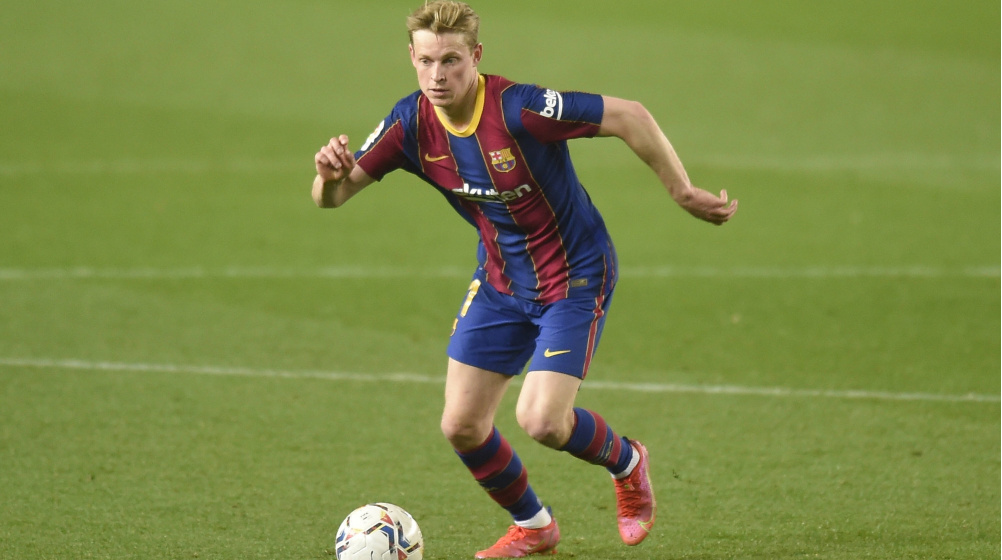Alex Stewart looks at who could play in a similar style and looks at why United want that sort of midfielder anyway
“We are looking for a player who can play in the holding midfield position, but it has to be the right one. There are not many in that position capable of the level we demand. When we can’t find him, we have to deal with the players in our squad now and we will develop one in that position,” Erik ten Hag told the media in mid-July.
What exactly does Ten Hag mean by ‘the right one’? If his pursuit of Frenkie de Jong is anything to go by, then he wants ball progression, carries from deep, and incisive passing through the thirds. But what seems to matter less is the actual ‘holding’ element. Let’s get into semantics a bit.
A ‘holding’ midfielder is so called because they literally ‘hold’ their position; they stay in a defined part of the pitch, in front of the back four or five, to offer a screen.
This may have a creative element, even a very important one. A player like Pep Guardiola was a holding midfielder, whose job was to receive the ball from the back line and progress it with passing. But he wasn’t a great defender, or especially fast, so Johan Cruyff compensated by using two midfielders to help cover him. Cruyff knew that he needed to compact the space that Guardiola was responsible for, mostly by giving the responsibility for that space to others. His mantra was the smaller the space, the better the defender.
But Frenkie de Jong didn’t ‘hold’ at Ajax. Yes, he dropped off to collect the ball from the centre-backs, then began his frequent, exciting forays up field with the ball at his feet. His superb, press-resistant carrying and astute passing opened teams up. But he also used his ability to get into dangerous positions in the attacking third, which meant Ajax had various, different threats. Covered by the hard-working Lasse Schone and Donny van de Beek, and with Matthijs de Ligt and Daley Blind astutely covering behind, de Jong didn’t need to ‘hold’; it very specifically wasn’t his job, as the below graphic showing where he dribbled and carried makes clear.

While de Jong’s role has evolved at Barcelona, it’s safe to say that ten Hag is looking to get the version of de Jong he knew at a really good Ajax side. As Carl Anka and Mark Carey wrote in The Athletic, de Jong is “a press-resistant, ball-carrying midfielder who is pretty good when working on the halfway line and attacking the opposition goal but is one of the best when he works in deeper areas.” Obviously it is worth asking if this is still true, given how little he has played that role at Barcelona in the last two seasons, but let’s assume it is.
But, de Jong doesn’t appear to want to go to Manchester United. It’s not the place of this piece to speculate why that might be, but even if de Jong’s situation at Barcelona is uncomfortable, press reports suggest that de Jong doesn’t much fancy United as an alternative.
So who might be an alternative for the kind of de Jong that ten Hag managed at Ajax? We used TransferLab to create a FDJ profile. We’ve done this before, for potential de Jong alternative Ibrahim Sangare, and that article is a useful introduction to the process. For de Jong, focussing on qualitative metrics like progressive short passing and carrying, we generated a profile that identified de Jong as the most de Jong-like player in the Eredivisie in 2018/19, his finest season at Ajax.

Applying that to LaLiga for last season, and filtering for players with more than 700 minutes, we get a similarly strong result.

So it’s safe to say that this profile identifies key de Jong qualities and is likely to highlight like players. Interestingly, as soon as any defensive metrics were introduced, de Jong slipped from being the closest match to the ‘ideal de Jong’. We will come to the import of that later, although it is worth saying that at Ajax, his high pressing did sometimes result in helpful high interceptions, and he could also produce the occasional very useful tackle. As this excellent piece from Kate Fedrick on de Jong at Barcelona notes, “Frenkie does not excel in any area of the pitch in terms of his defensive actions, but his numbers look the best in the final third.”
At Ajax, he did cover a lot of ground and generally did the bulk of his work in the middle third, but the below map shows the defensive actions one might expect of a box-to-box player, not a defensive or holding midfielder.
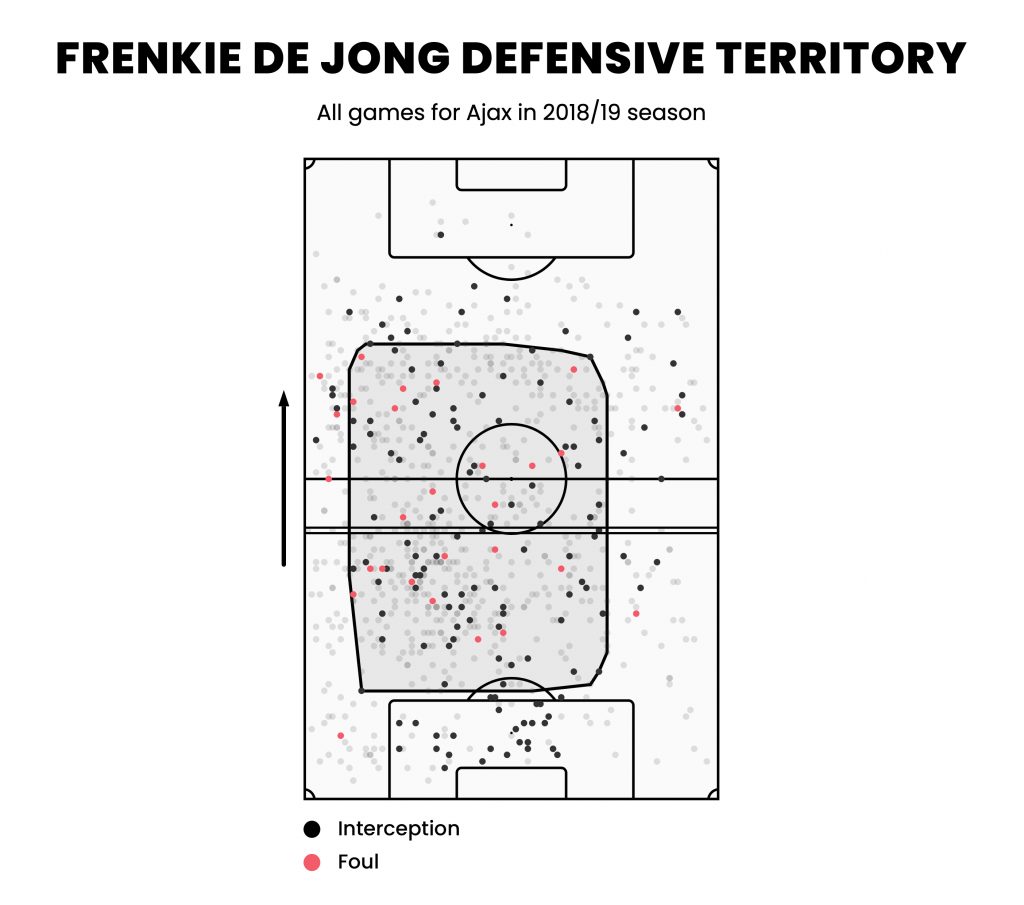
So, concentrating on his on-ball, not defensive, attributes, who are reasonable de Jong alternatives with his skillset of ball progression and dribbling from deep?
The LaLiga graphic above already shows a few possibilities, although let’s assume that Toni Kroos and Luka Modric are probably quite happy where they are. Casting our net wider, Ligue 1 shows a few players that would do a great job, not least the snappy, combative Marco Verratti, who has silky passing to go with his steely pressing and tackling. Matteo Guendouzi excelled for Marseille last season, often dropping off the flanks to progress the ball almost like a wing-back, and, like Verratti, brings a good defensive ethic too. Aurelien Tchouameni has moved to Real Madrid and is a world-class all-round midfielder in the making, while Renato Sanches will be hoping to build on his excellence at Lille in his new surroundings in Paris.

Last season’s Bundesliga highlights, perhaps unsurprisingly, Joshua Kimmich, arguably the best all round DM in the world. Jude Bellingham is a genuinely brilliant linking player, who also progresses the ball well; it’s good indicator of the sort of player who profiles like de Jong. Corentin Tolisso is another interesting option, underused at Bayern due to a surfeit of options, but still an extremely handy footballer.

Those Bayern options are now stronger with the acquisition in June of Ryan Gravenberch, de Jong’s heir apparent at Ajax before his departure for southern Germany. It’s a strong indicator that if clubs do business by identifying good talents early, they can secure players of outstanding quality rather than flail around for what is left. Also worth highlighting is Orkun Kokcu, who was also a feature in this all-round scouting trip to the Eredivisie we published in March.

Gravenberch would have been an ideal player in this role, less defensively-minded perhaps than de Jong was in the 2018/19 Ajax iteration but not by much, and as comfortable progressing the ball (and perhaps even a little more adventurous in the final third). Bayern have snapped up a superb player.
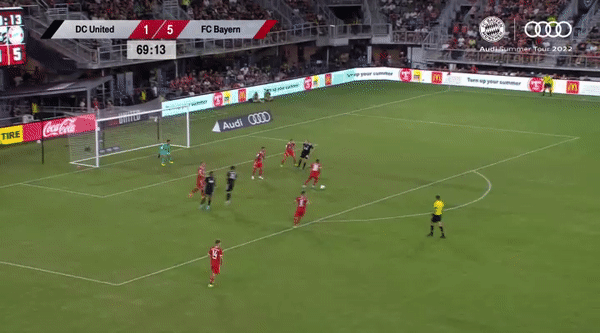
Another player who could have been available, but for another club moving faster, was River Plate’s, and now Benfica’s, Enzo Fernandez. He leads the list in Argentina’s top tier last season by some margin; we have filtered these players to be eligible for a work permit, too, as well as by minutes.

Fernandez again fits the profile perfectly and looks to be another very astute Benfica pick-up from South America, even if he might face tougher defensive set-up in Europe than in the gif below shows!
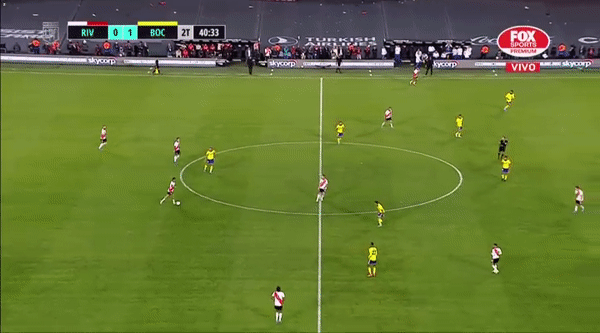
Serie A has two players often suggested as de Jong alternatives for United, Ismael Bennacer and Fabian Ruiz. Nicolo Barella is an very interesting pick, though, playing a kind of mezzala role for Inter which stresses his ball carrying and link play, while also offering a goal threat. Barella is, in that way, not too dissimilar to Bellingham, although he tends to operate a little wider and offers more thrust into the box. Maxime Lopez is the other interesting player in this list, a defensive midfielder who excelled at Marseille and moved to fill the space left by the brilliant Manuel Locatelli at Sassuolo, in a move that surprised a few people given Lopez’s potential.

All of these players that we have highlighted perform very well against the Frenkie de Jong profile which, to restate, has no defensive metrics in it at all. Some, such as Kimmich or Tchouameni, are more defensively-minded but play in a style or for a side where they are able to express their progressive skills a lot too. Others, like Bennacer or Fernandez, do have defensive responsibilities but are used to create from deep with ball-carrying and passing. Others, like Barella or Belligham, are more overtly attacking, but use carrying and short, progressive passing as well as de Jong, just slightly higher up the pitch (more like de Jong at Barcelona than de Jong at Ajax).
This raises two key points. Firstly, we have used data to show who does similar things to de Jong with similar quality on the ball, but we still get a few fairly distinct types of player. They are all good, but they all fulfil different roles in different set-ups, while also all actively progressing the ball up the pitch using passing and carrying. This is why roles, not positions, is a more helpful thing to think about when considering players. This is especially true with midfielders. The heuristic often applied to positions is, well, positional: they are in the middle, so they are a midfielder. When considering roles in a general sense, we might also add a predominant intention: they are a defensive midfielder, or an attacking midfielder.
The only two possible jobs of the central midfielder pic.twitter.com/a5dkzIHHsR
— Alex. (@alexfrco) August 8, 2020
The point, as the above meme beautifully shows, is that this taxonomy is reductive, simplistic, and unhelpful. De Jong’s interesting and useful array of skills, when described using data and in order to generate a list of like players, shows up players who do the same stuff, but in different parts of the pitch and to generate different specific outcomes (by this, we mean something more distinct than just ‘move the ball closer to the opposition goal’; we can safely assume everyone wants to do that).
Frenkie de Jong excels at the “ball magically moves to other side of the pitch, dw”. He is press-resistant, in that he can maintain possession for his team in tight spots, often by moving the ball quickly and sometimes by just dribbling through. But he is also press-engaging. He draws the opposition forwards, sometimes even only a tiny bit, but this, and his ability to conjure passing angles, makes him an exceptional at ball progression. Picking the ball up from his defenders, he can carry towards a press and then release a pass.

He is excellent at using other players to open those angles, too. Here he plays the ball forwards to van de Beek, who sucks three players in, allowing de Jong time and space to pick a much more aggressive pass than what was available before.

His deft touch and technical ability also mean that in advanced positions, he can conjure through passes that unlock defences, either down the line….
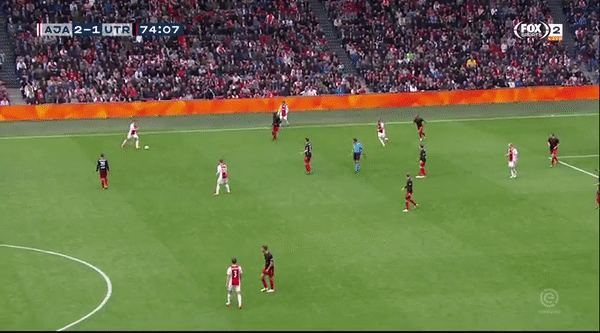
…or in the half-space.
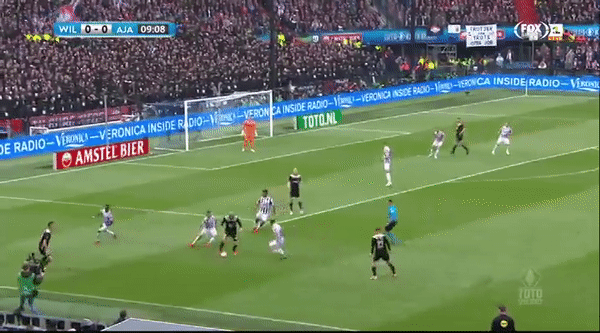
The point of this recapitulation of de Jong’s abilities, though, is not simply because we can include some clips of him doing amazing things with the ball. It’s to show that he is a brilliant connector, who can link play anywhere on the pitch. He is best when he can roam, dictate play, use his teammates to draw in a press to create space for himself, or draw the press himself to create space for others.
He is not a holding midfielder. And this brings us to the second point. Holding midfielder is a role, and it is, according to ten Hag, a role that United need. But de Jong would fulfil a different role, even if he starts play deeper like he did at Ajax. At Ajax, he didn’t hold because Schone or van de Beek did a lot of the screening work, or de Ligt or Blind stepped up to cover, and because Ajax are a very dominant team in that league (who still got caught out badly a few times in transition because of their rest defence, like the 6-2 defeat to Feyenoord).
And de Jong is largely seen as a ‘defensive’ midfielder because he likes to start play deeper on the pitch, towards his own team’s goal. But that is a location-based description, not a clear indicator of a primary skill-set or a role either. De Jong is a connector, a facilitator, a line-breaker…call it what you will, but the players whose profiles align with him do similar things but not, as we have said, necessarily in a similar part of the pitch.
De Jong raises the ceiling of what a team can do in terms of ball progression, but only when the rest of the team is geared towards covering for that. And in United’s case, this raises two further interesting points. The side were actually pretty good at ball progression and carries last season, although the ability to work the ball out of deeper areas was poor. In this case, signing de Jong, or Bennacer or Ruiz or pursuing Gravenburch or Fernandez before they moved, makes sense. De Jong would make United objectively better at a thing they were not as good at before.
But, de Jong would not solve something else United were not good at, and that is having cover in front of the defence and being more sound in defensive transitions. In this regard, ten Hag’s comment about finding someone in the squad to do that role makes more sense. Bringing in a player who can do the magical ball progression is wise if United also sign a more defensively-minded player, or ensure that someone like Fred, who has good defensive metrics and is helpfully two-footed, inhabits that role more distinctly.
This article has obviously digressed somewhat from the main point: if United can’t get de Jong, who should they go for instead (of the players still available). Hopefully, though, it has answered that, while also raising some points about player roles and profiles, and how teams should be built in order to get the best out of those who can do exceptional things.
With thanks to Marc Lamberts and Byron Hutchison for their thoughts on this piece

